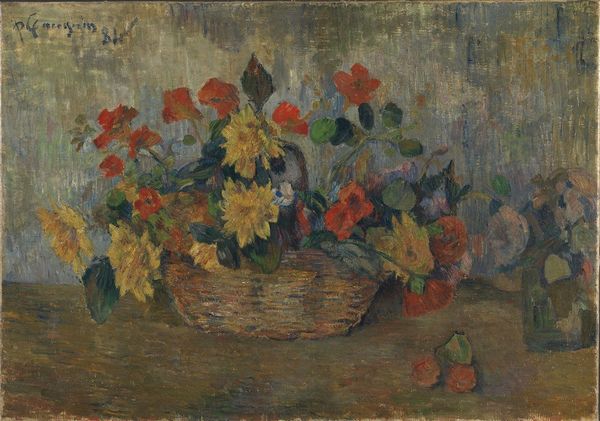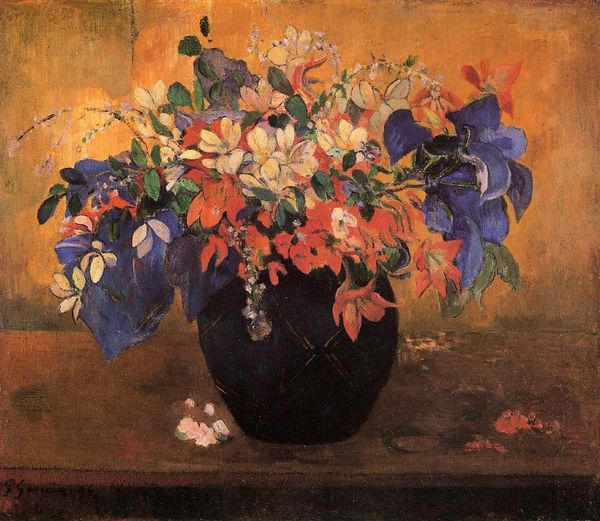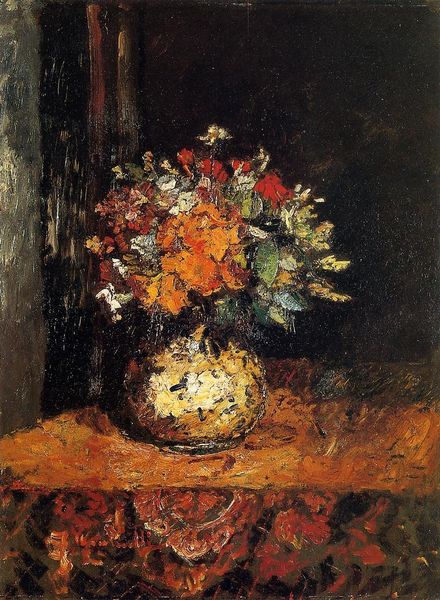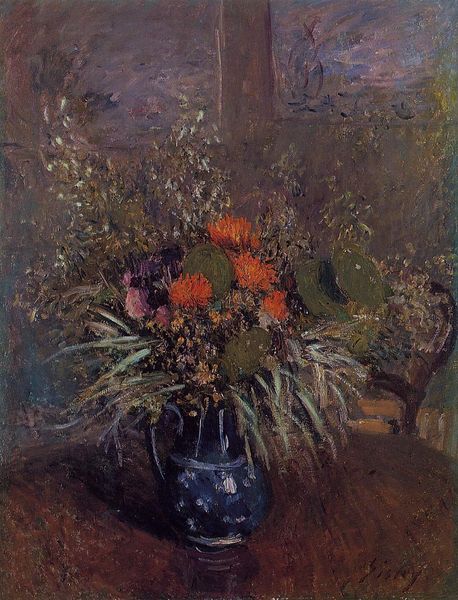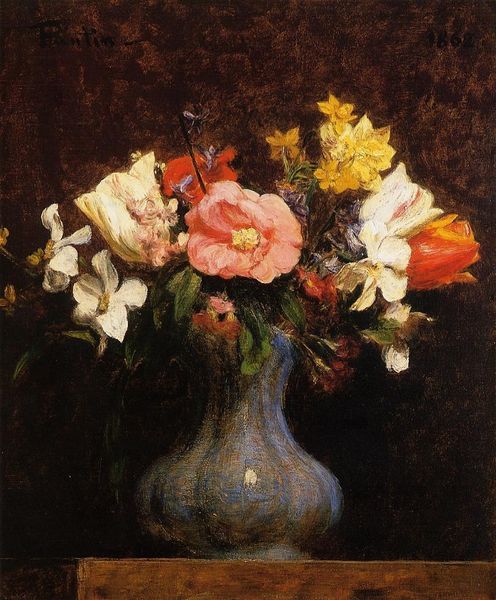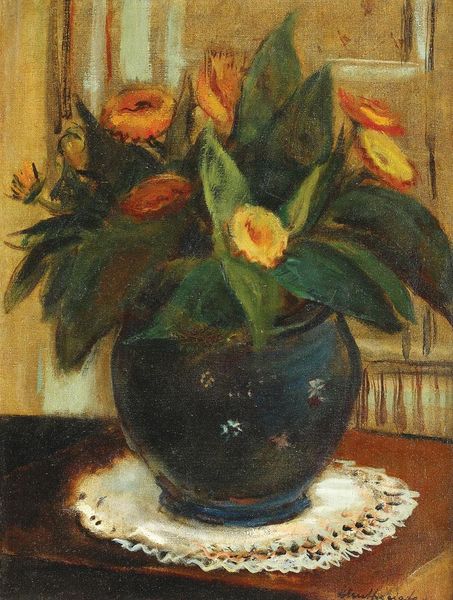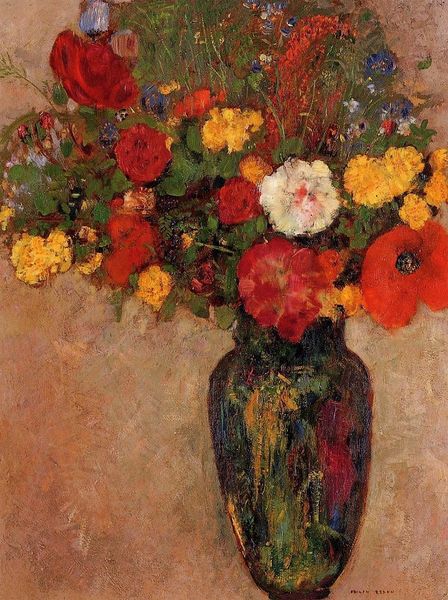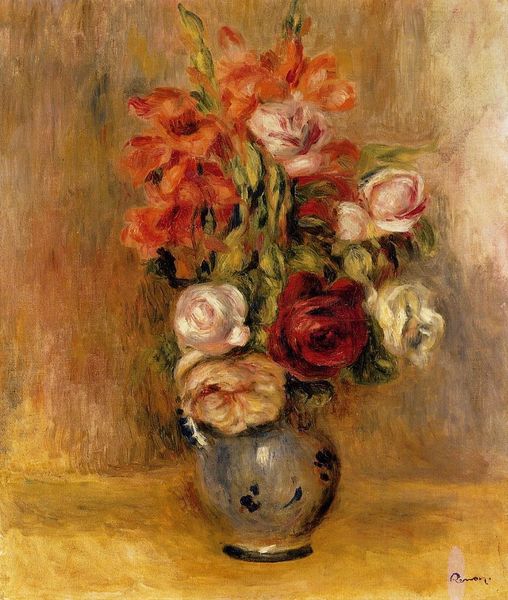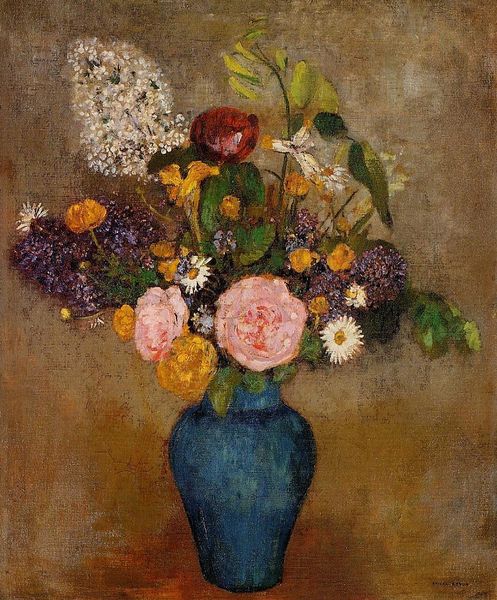
painting, oil-paint
#
portrait
#
still-life
#
organic
#
painting
#
oil-paint
#
oil painting
#
trompe-l'oeil
#
post-impressionism
Copyright: Public domain
Editor: So here we have Paul Gauguin’s “Evening Primroses in the Vase,” painted in 1885, rendered in oil paint. It has this very muted, almost melancholic feel to it. The colors are rich but darkened, and you can really see the texture of the paint itself. What jumps out at you? Curator: Immediately, I think about the cost of pigments in 1885, and what access Gauguin had to certain materials. How did the socioeconomic realities of artistic production influence his choices here? The dark background, for instance. Was that purely aesthetic, or was it more affordable? Editor: That’s a perspective I hadn’t considered! I guess I assumed artistic choices were more about... well, the art itself. Curator: But the art IS material. The painting IS made of physical things that someone had to labor to extract, process, and sell. We need to examine what kinds of labor supported the consumption of art materials, who profited, and how that influenced not only what was made, but what the artist felt empowered to depict. What class of patrons would purchase something like this? Editor: It makes you think about art as a commodity in a different way. How his "primitivism" aesthetic plays into contemporary European appetite of "exotic" cultures, perhaps? Curator: Exactly! Even the seemingly simple still-life is loaded with socioeconomic meaning once you start to unpack the means and context of its production and dissemination. Editor: So, looking beyond just the flowers, we are investigating Gauguin's socio-economic placement and how this determined his subject matters. That's amazing. Curator: Indeed, and consider the ethical implications for artists and the art market, even now.
Comments
No comments
Be the first to comment and join the conversation on the ultimate creative platform.
